Chapter 5: The Integumentary System Overview
1/135
There's no tags or description
Looks like no tags are added yet.
Name | Mastery | Learn | Test | Matching | Spaced |
|---|
No study sessions yet.
136 Terms
Integumentary System
Includes skin and accessory structures.
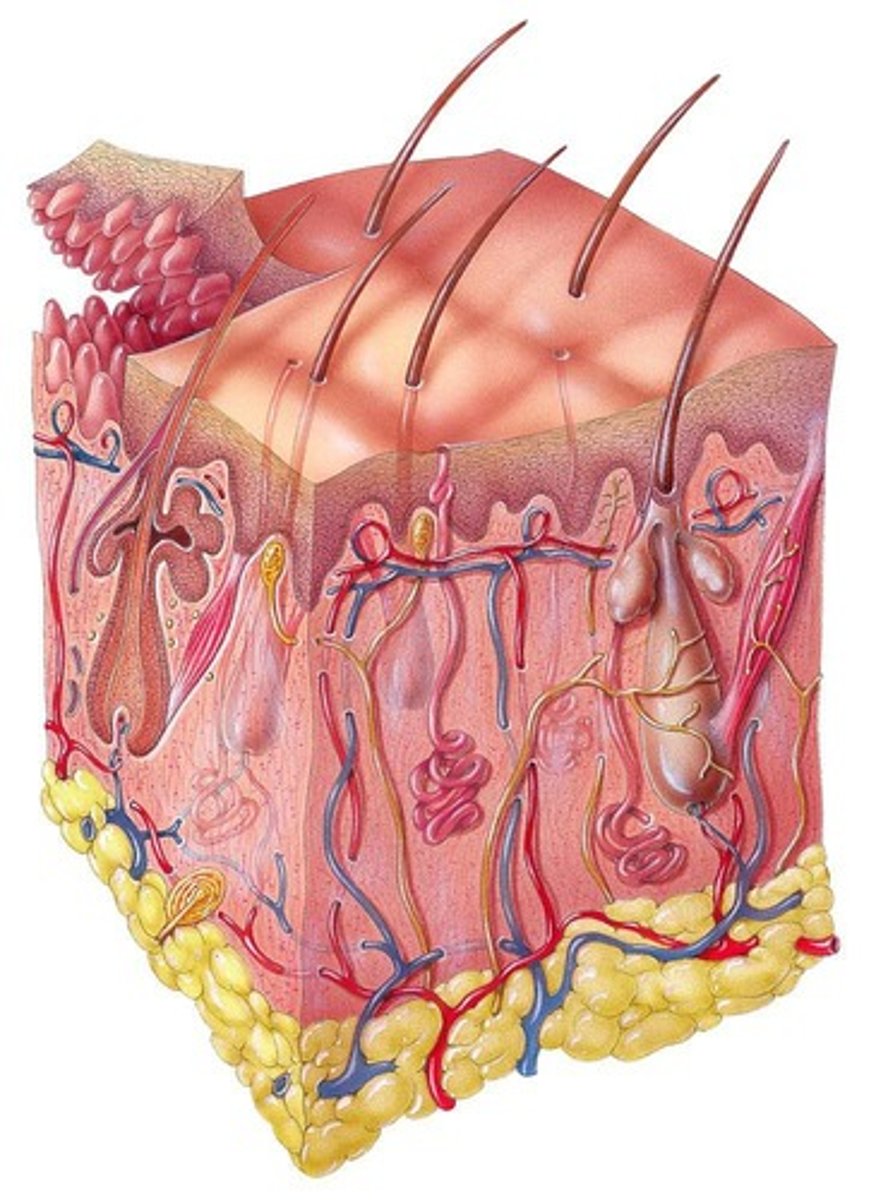
Cutaneous Membrane
Another name for the integument.
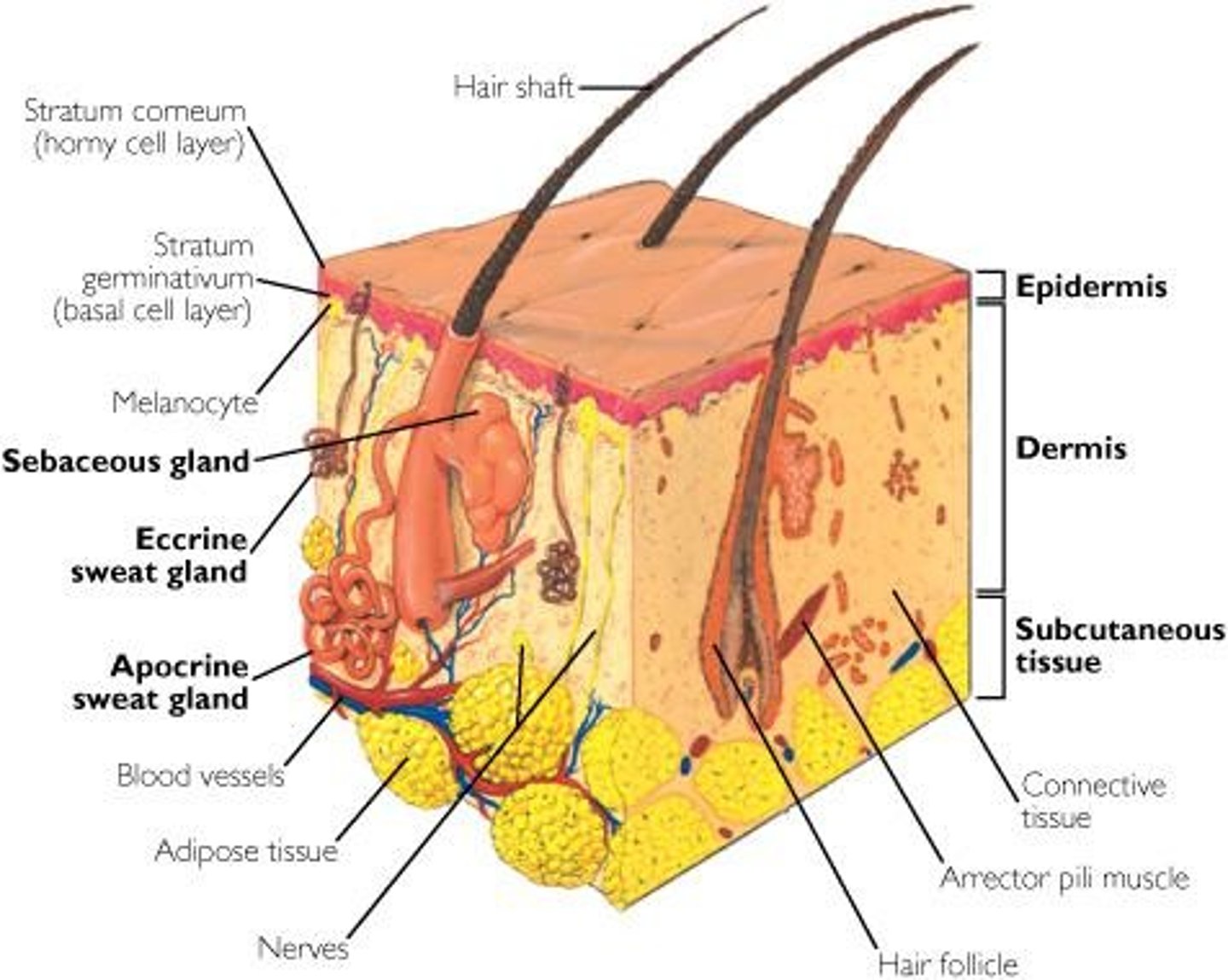
Accessory Structures
Includes hair, nails, glands, blood vessels.
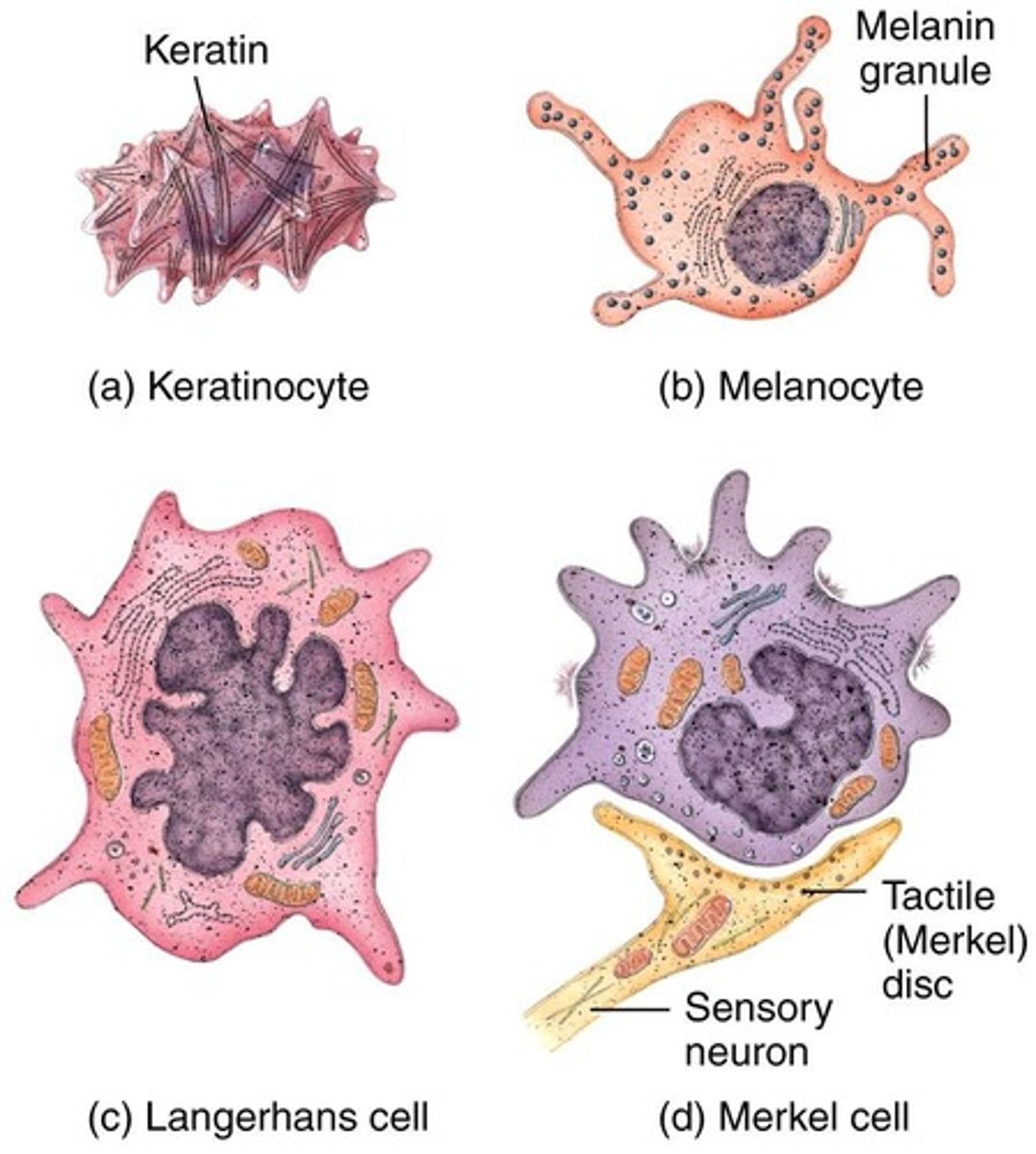
Epidermis
Outer layer of skin, composed of epithelium.
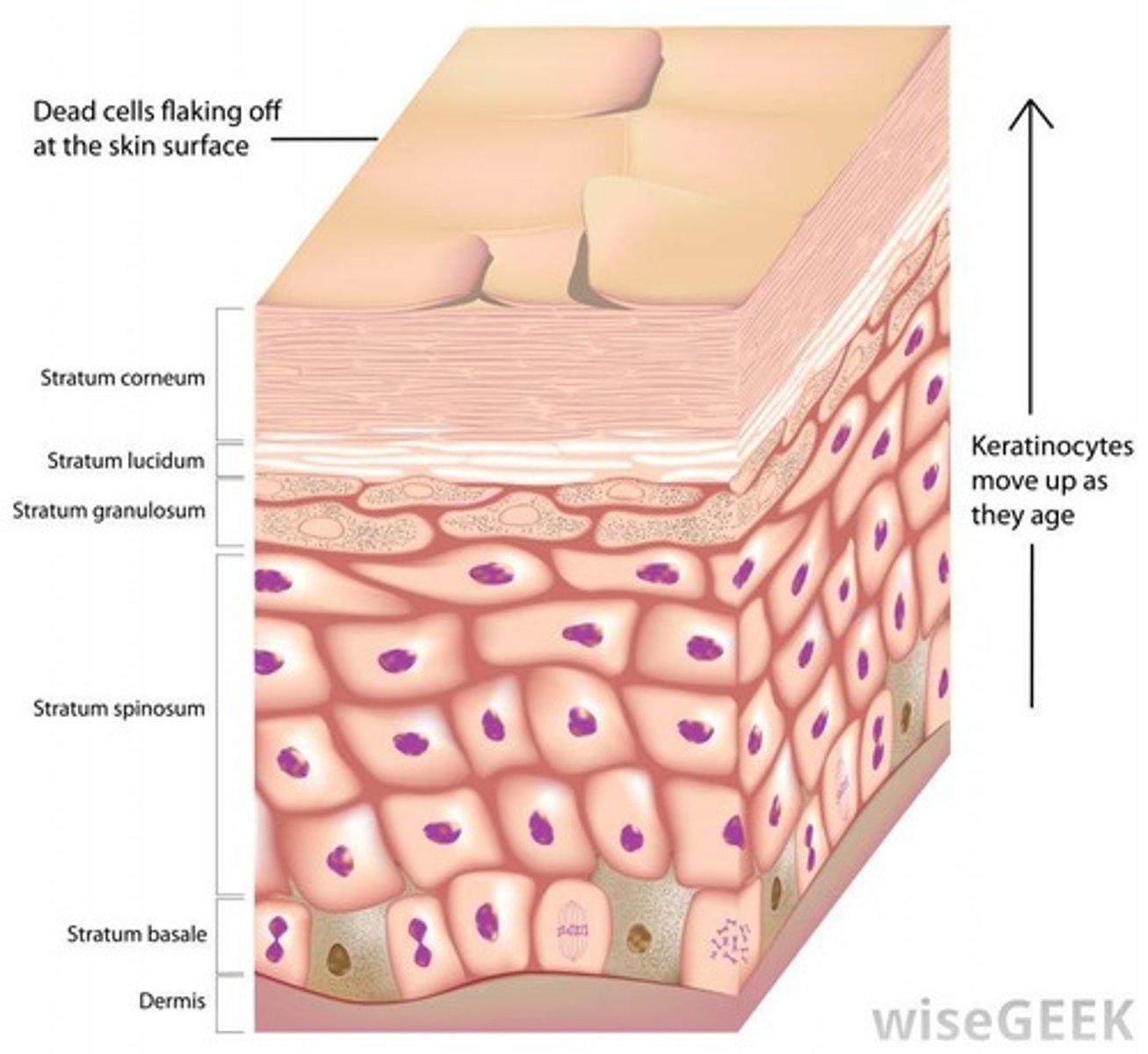
Dermis
Inner layer of skin, composed of connective tissue.
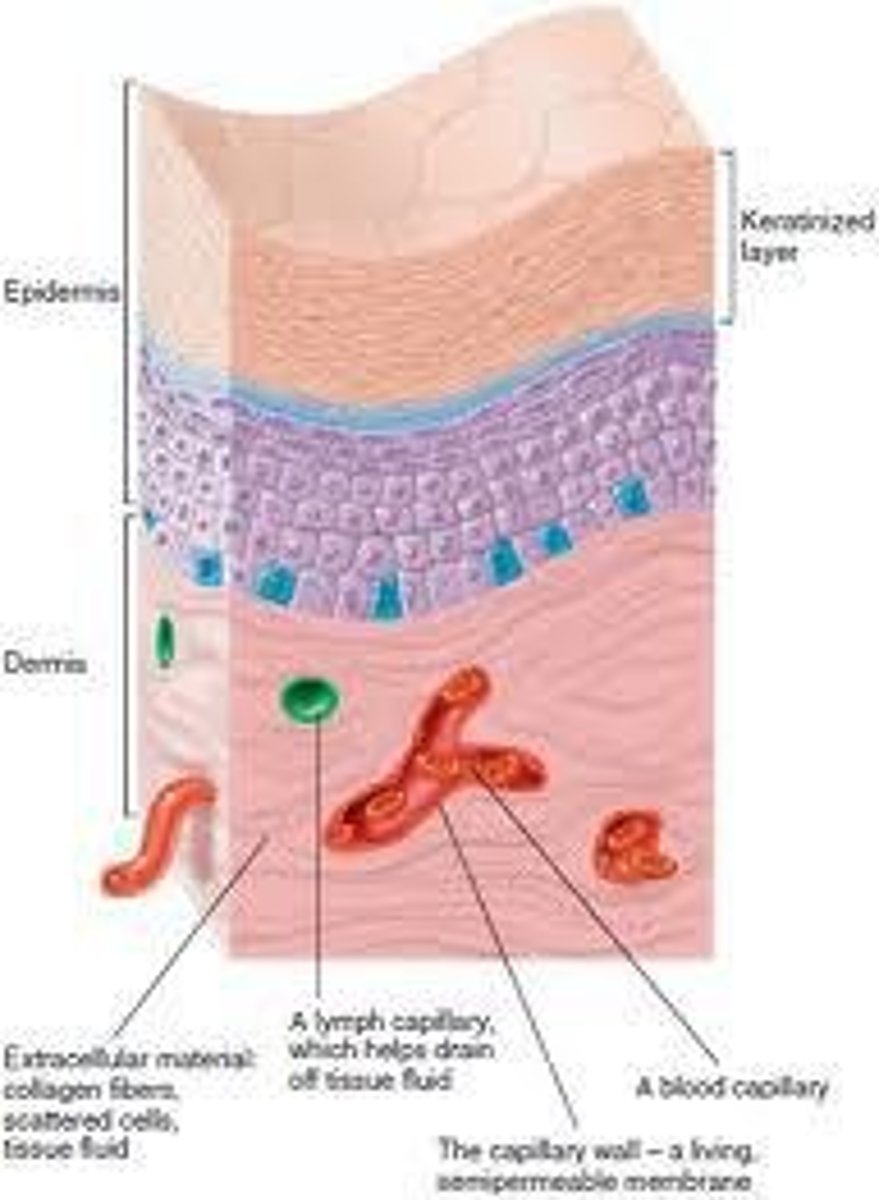
Subcutaneous Layer
Also called hypodermis, provides insulation.
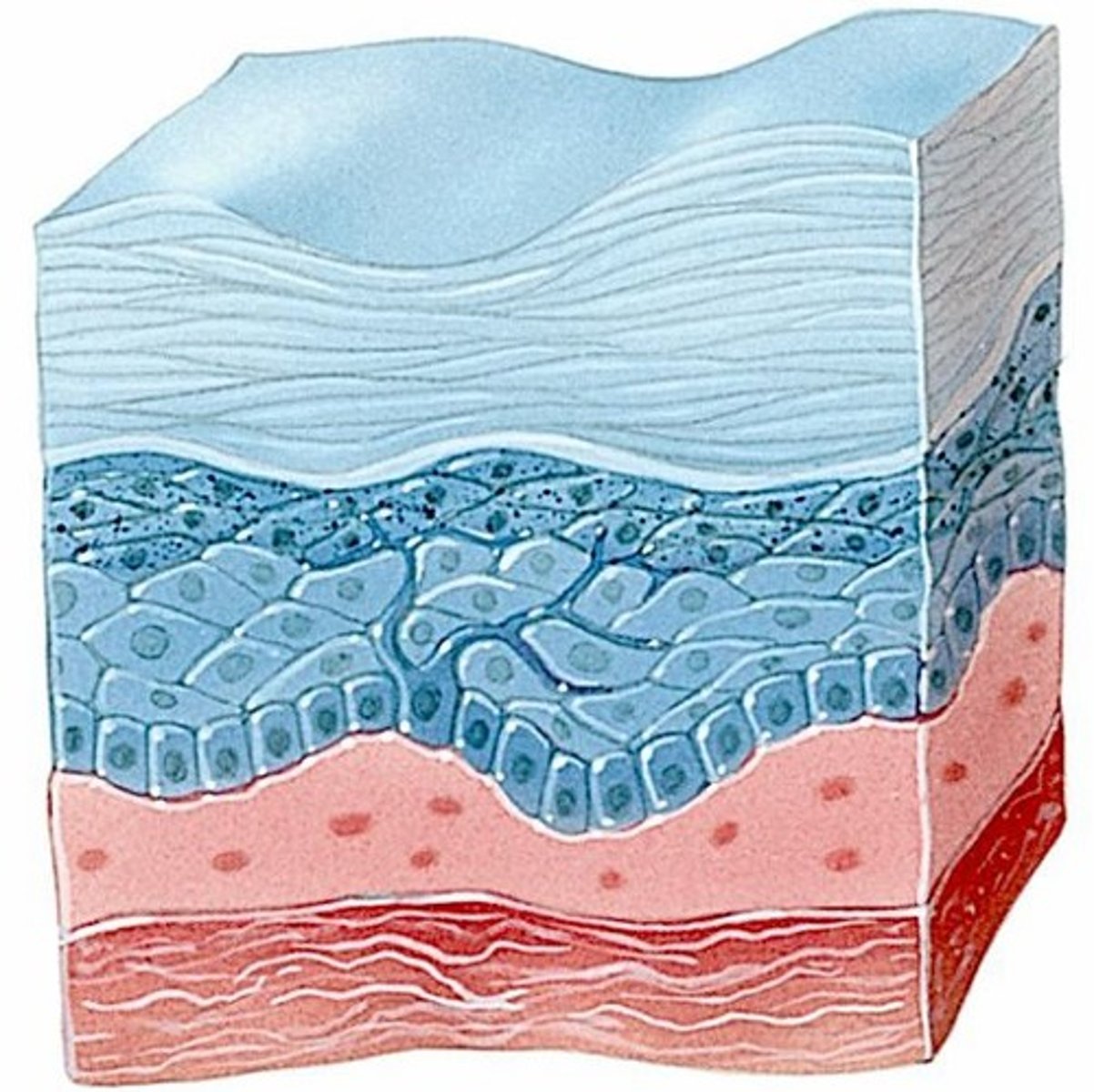
Keratinocytes
Cells producing keratin, make up 90% of epidermis.
Melanocytes
Cells producing melanin, protect against UV damage.
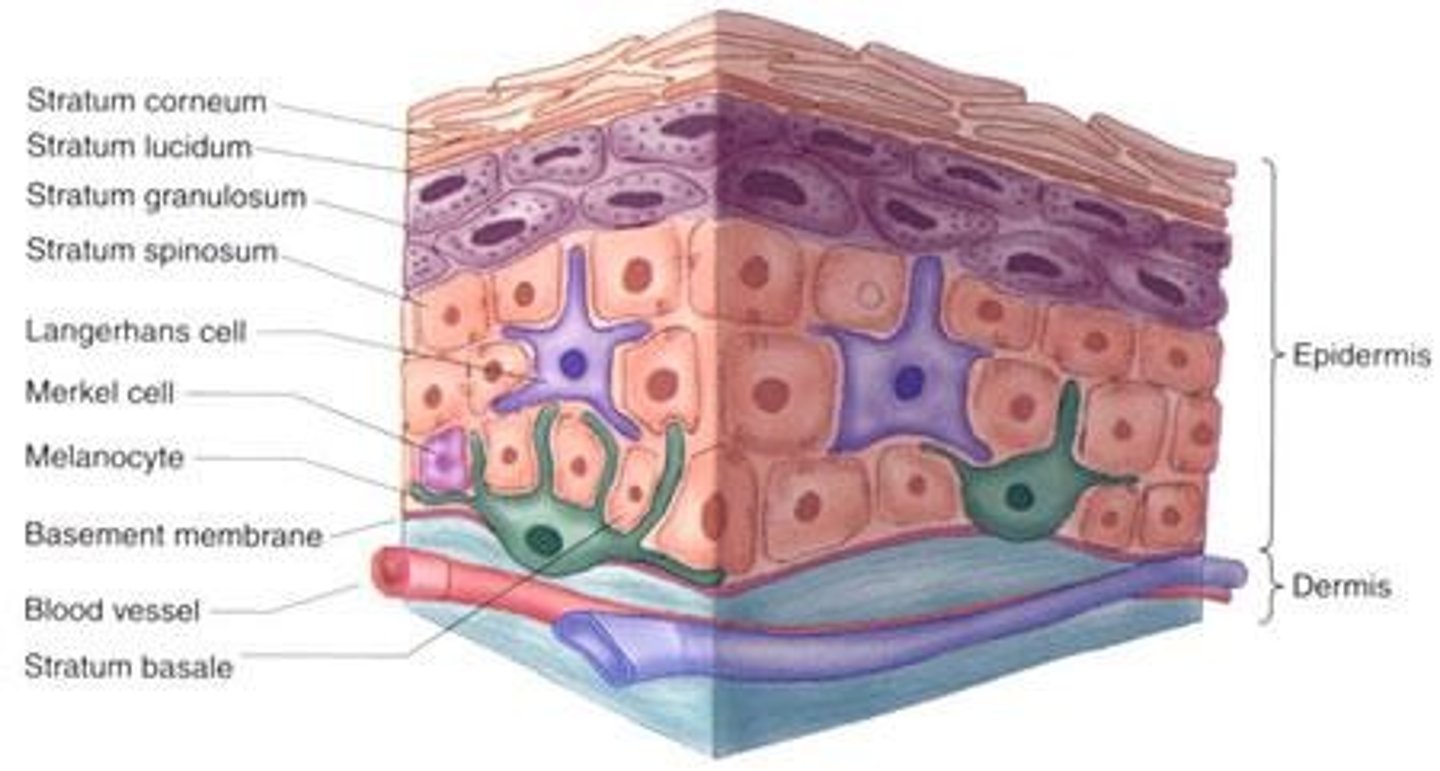
Langerhans Cells
Macrophages involved in immune responses.
Merkel Cells
Cells functioning in touch sensation.
Skin Thickness Range
1-5 mm, thinnest at eyelids, thickest at heels.
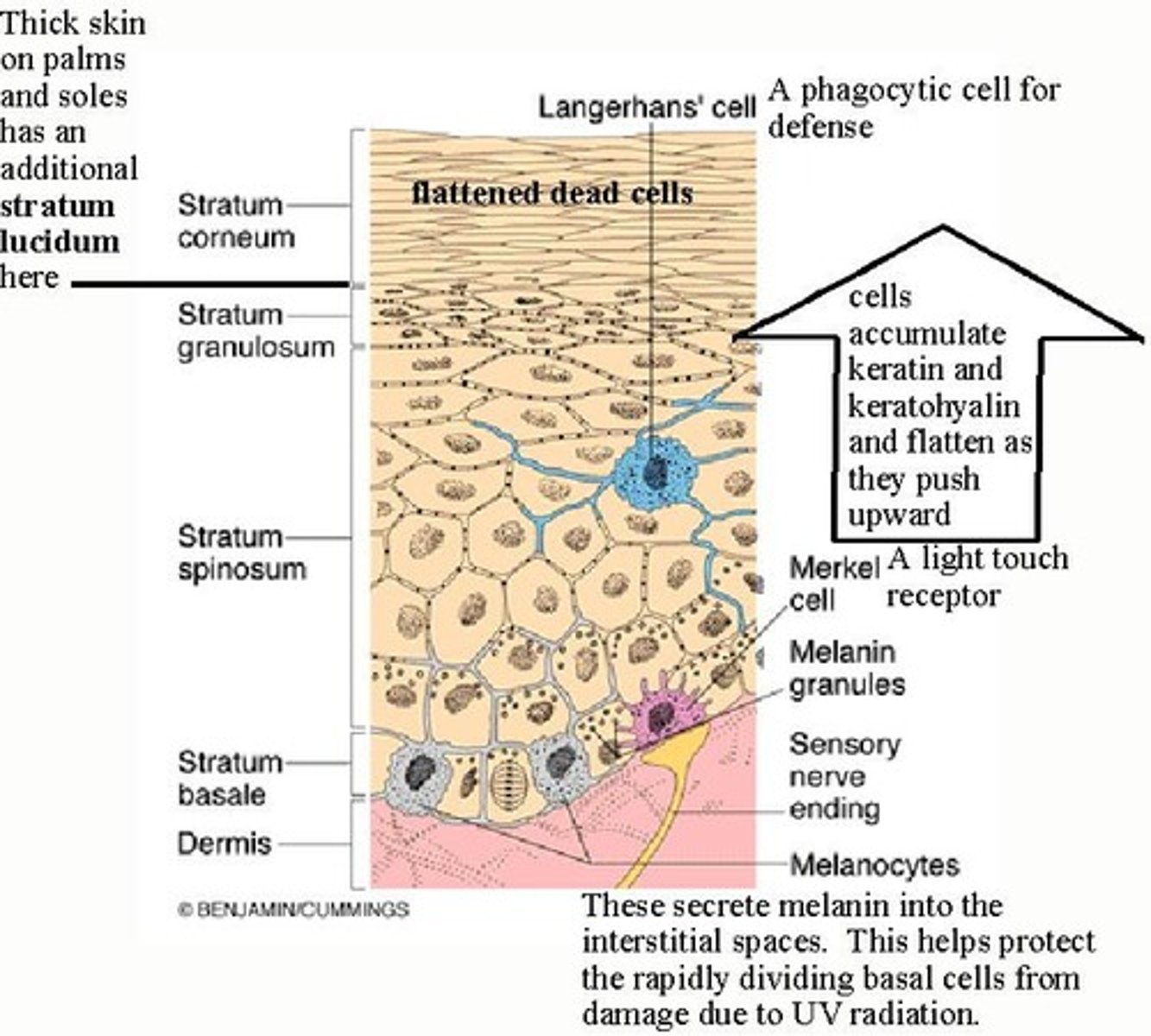
Skin Weight
Weighs 4.5-5 kg, about 16% of body weight.
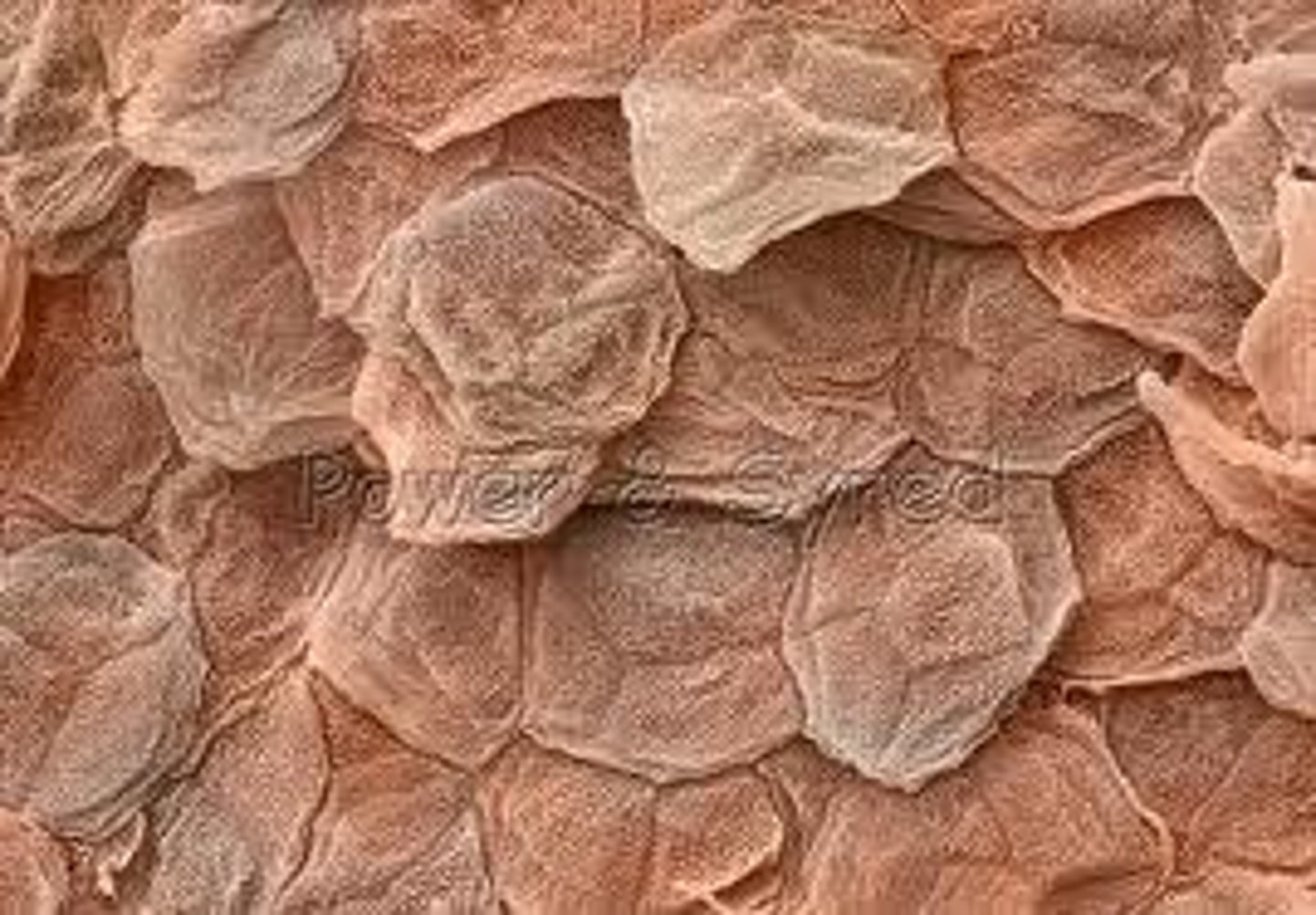
Skin Area
Approximately 2 square meters (22 square feet).
Sloughing Off
Natural loss of dead skin layers.
Skin Functions
Protection, temperature regulation, sensory perception.
Vitamin D Synthesis
Occurs from cholesterol due to sunlight exposure.
Epidermal Layer Composition
Composed of keratinized stratified squamous epithelium.
Simple Cuboidal Epithelium
Found separating epidermis from dermis in thinner skin.
Simple Columnar Epithelium
Found in thicker skin, separating epidermis from dermis.
Stratum Basale
Deepest layer of epidermis, continuous cell division.
Stratum Spinosum
Fourth layer, contains 8-10 keratinocytes.
Stratum Granulosum
Third layer, non-dividing cells filled with keratin granules.
Stratum Lucidum
Fourth layer, present only in thick skin.
Skin Recycling Rate
Approximately 1 kg of skin epithelium lost yearly.
Emotional Expression
Facial expressions facilitated by skin.
Blood Vessels in Skin
Provide nourishment and temperature regulation.
Nerves in Skin
Dispersed throughout, provide sensation.
Adipose Connective Tissue
Provides insulation and cushioning in subcutaneous layer.
Stratum Corneum
Outermost epidermal layer of dead keratinocytes.
Keratinization
Process of replacing viable cells with keratin.
Callus
Thickened skin from constant friction.
Dandruff
Excess keratinized cells shed from the scalp.
Thin Skin
Covers all body regions except palms and soles.
Thick Skin
Covers palms, digits, and soles.
Melanin
Pigment produced by melanocytes in stratum basale.
Eumelanin
Brown to black pigment in skin.
Pheomelanin
Yellow to red pigment in skin.
Freckles
Clusters of concentrated melanin from sun exposure.
Nevi
Benign chronic lesions also known as birthmarks.
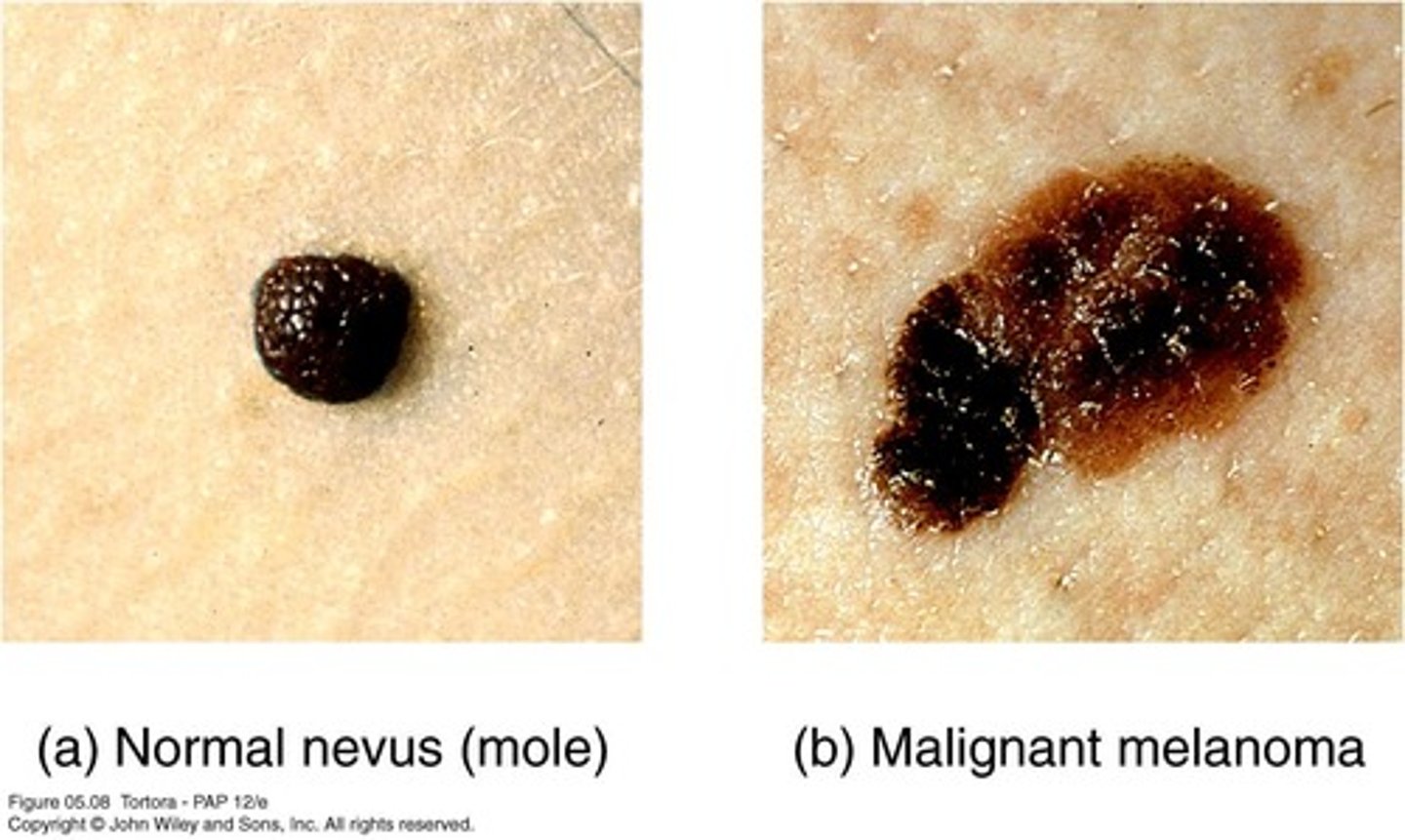
Malignant Melanoma
Cancer of melanocytes, a serious skin condition.
Vitiligo
Chronic disorder causing depigmentation patches.
Albinism
Absence of pigment due to enzyme defect.
Dermis
Layer composed of loose and dense connective tissue.
Papillary Region
Upper dermis with areolar connective tissue.
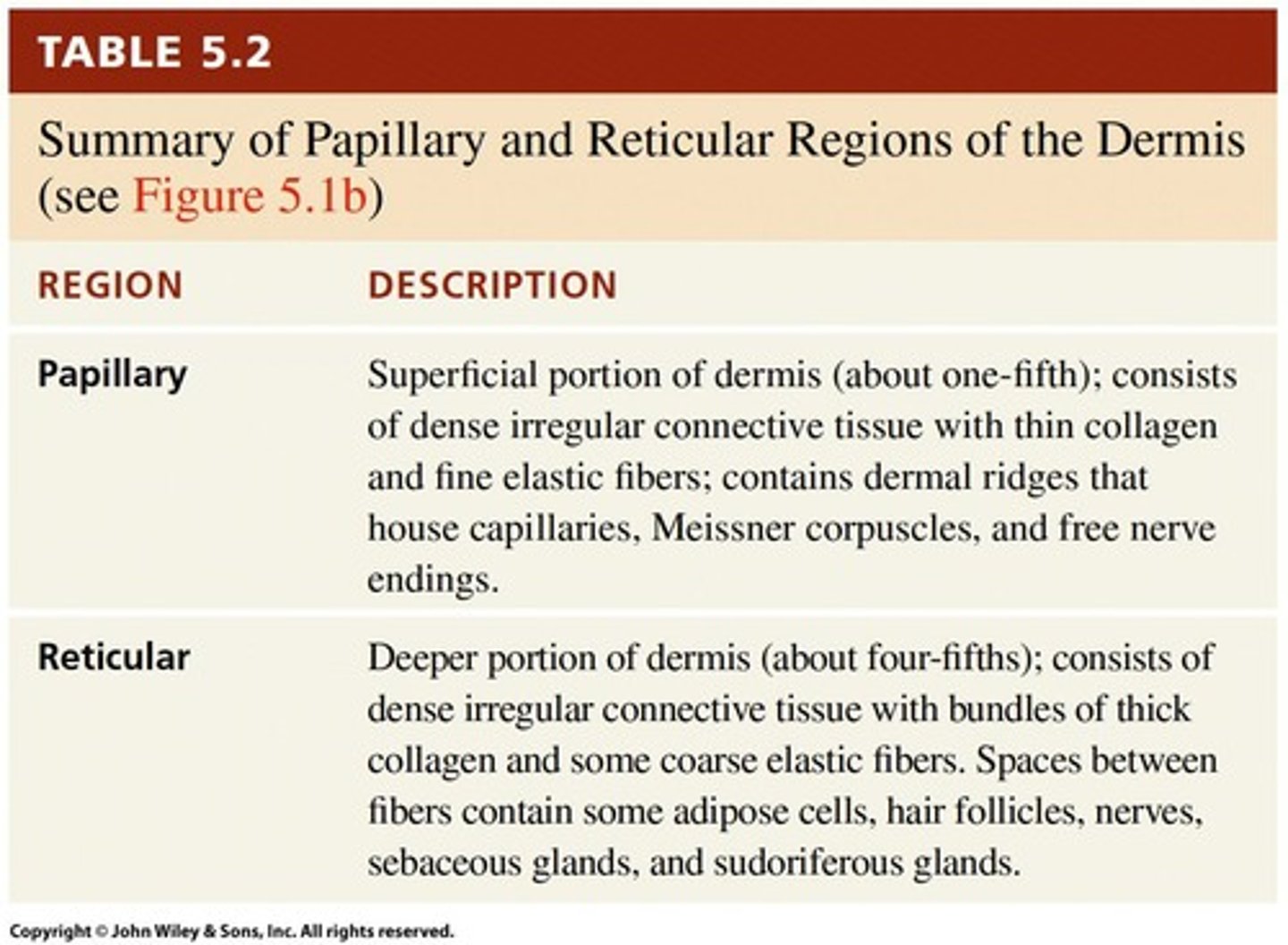
Dermal Papillae
Structures containing capillary loops and touch receptors.
Reticular Region
Lower dermis with dense irregular connective tissue.
Stretch Marks
Tears in dermis due to excessive stretching.
Lines of Cleavage
Tension lines indicating collagen fiber direction.
Sebaceous Glands
Oil glands in the dermis.
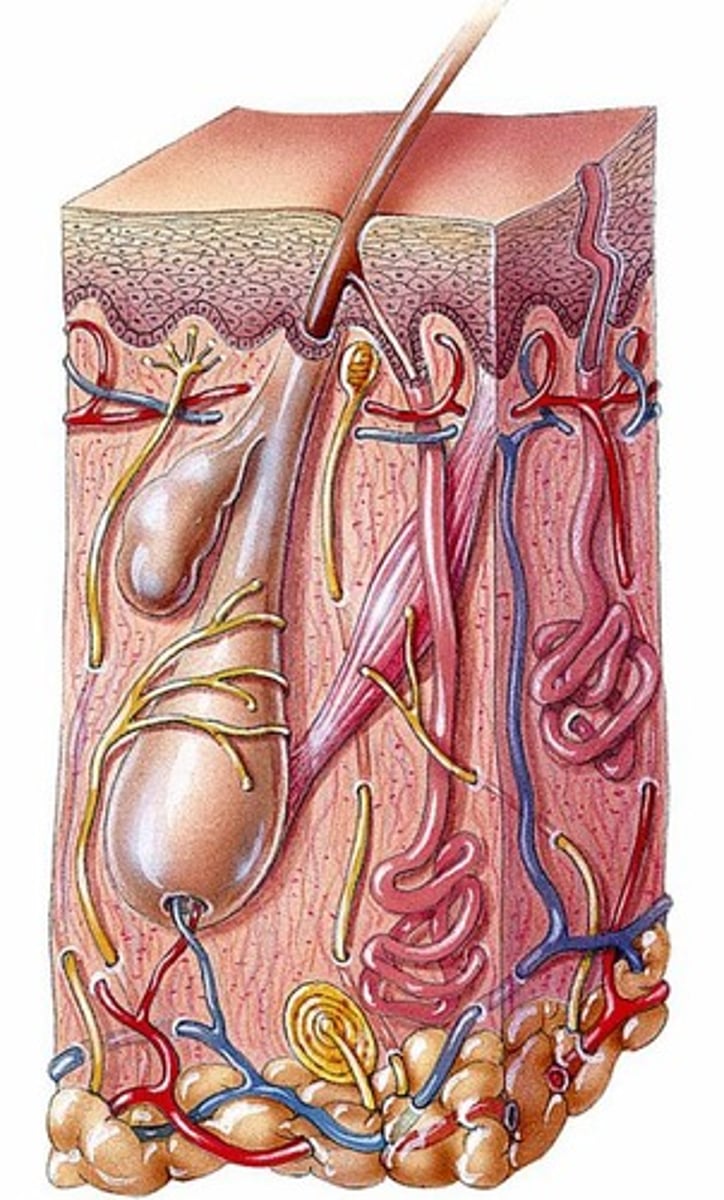
Sudoriferous Glands
Sweat glands in the dermis.
Corpuscles of Touch
Receptors for touch sensation in papillary region.
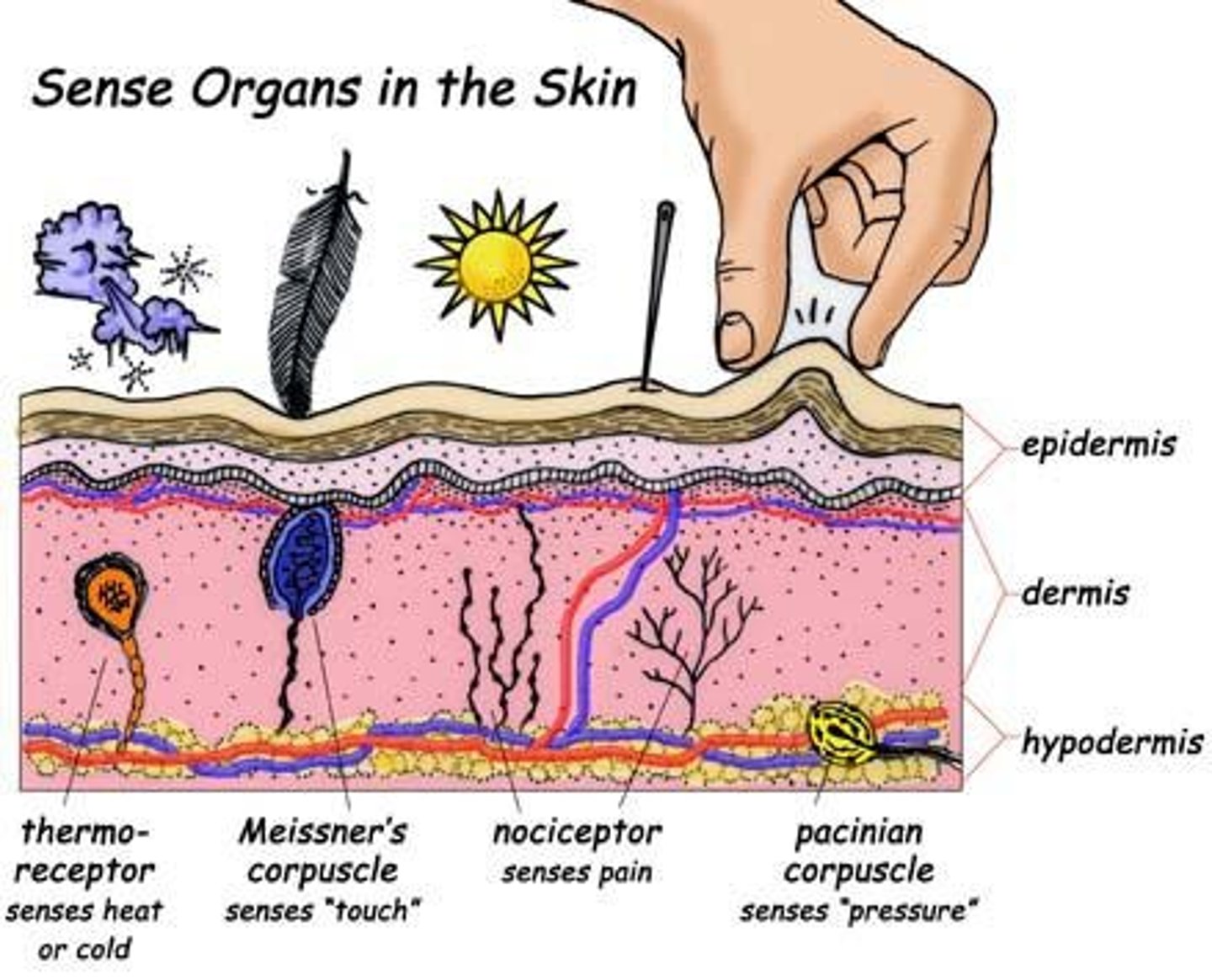
Free Nerve Endings
Nerve endings for pain and temperature sensation.
Keratinocytes
Cells that produce keratin in the epidermis.
Areolar Connective Tissue
Connective tissue linking dermis and epidermis.
Epidermal Ridges
Contours from dermal papillae; basis for fingerprints.
Collagen Ridges
Accumulated collagen fibers causing epidermal speed bumps.
Firmness of Grip
Increased friction from collagen ridges enhances grip.
Dermis
Skin layer primarily composed of collagen fibers.
Fibroblasts
Cells producing collagen; repair dermal layer during injury.
Subcutaneous Layer
Hypodermis; anchors skin to tissues and organs.
Pacinian Corpuscles
Sensory receptors detecting external pressure on skin.
Epidermis
Fast turnover layer providing protection to tissues.
Temperature Stability
Dermis maintains body temperature and prevents dehydration.
Sensory Receptors
Detect various tactile sensations like touch and pressure.
Merkel Discs
Sensory receptors for light touch located superficially.
Meissner Corpuscles
Sensory receptors for light touch in the dermis.
Hair
Pili; present on most body surfaces except palms.
Keratinization
Process where hair cells become keratinized and dead.
Hair Shaft
Part of hair above the skin surface.
Hair Follicle
Structure below skin level housing the hair root.
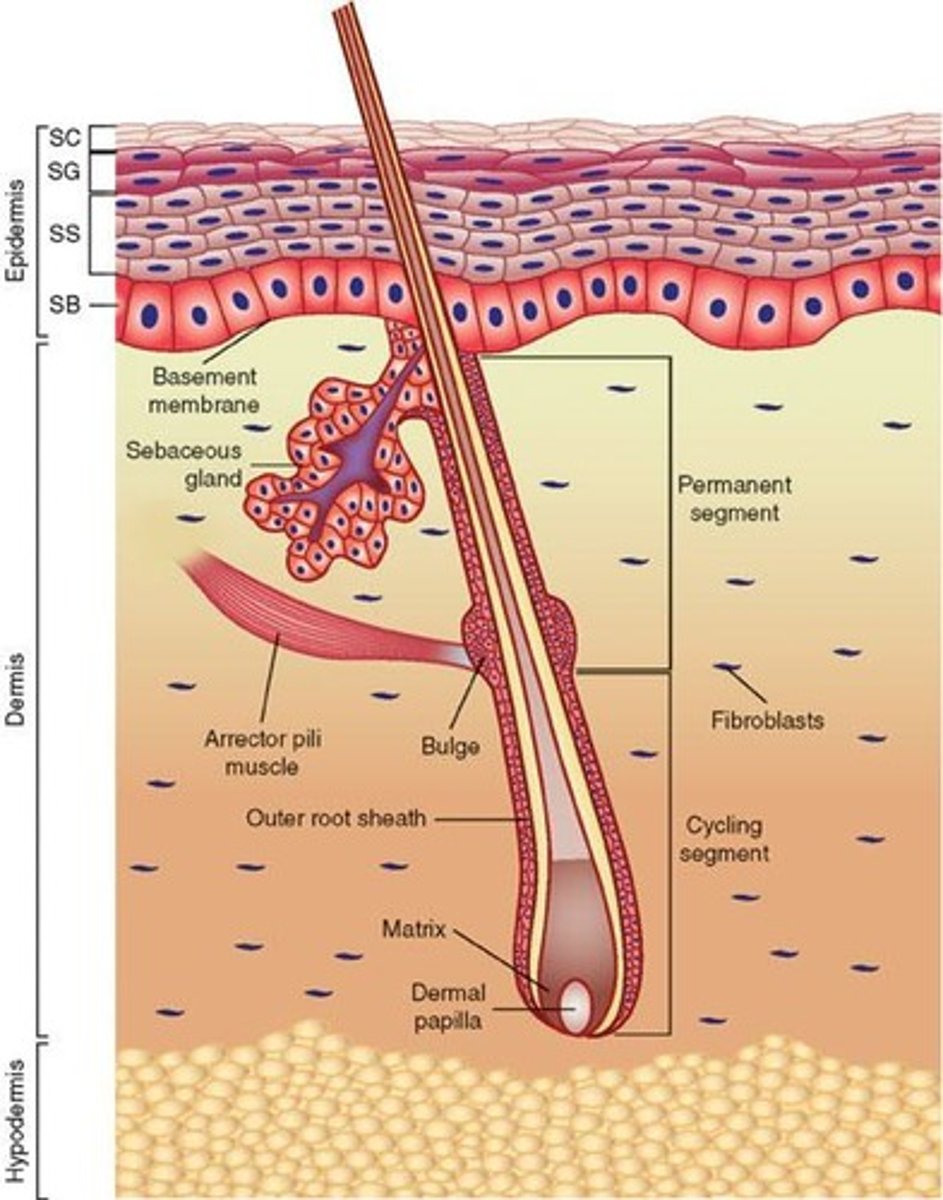
Epithelial Root Sheath
Protective layer surrounding the hair root.
Dermal Root Sheath
Connective tissue layer anchoring hair in dermis.
Sebaceous Gland
Oil gland merging with hair follicle for hydration.
Hair Papilla
Nerve-associated structure providing touch sensation.
Lanugo
Fine, nonpigmented hairs covering fetal body.
Vellus Hairs
Short, fine hairs barely visible to naked eye.
Terminal Hairs
Long, coarse, pigmented hairs like facial hair.
Melanin
Pigment determining hair color and type.
Exocrine Glands
Epithelial cells secreting substances like oil.
Accessory Structures
Components like hair and glands associated with skin.
Skin Insulation
Subcutaneous layer stores fat and insulates body.
Sebum
Oily substance preventing dehydration and inhibiting bacteria.
Eccrine Sweat Glands
Most common sweat glands, cover most body areas.
Apocrine Sweat Glands
Sweat glands in axilla, groin, and facial regions.
Thermoregulation
Process of maintaining body temperature through sweating.
Emotional Sweating
Sweating due to emotional stress like fear.
Ceruminous Glands
Modified sweat glands producing earwax in ear canal.
Nail Structure
Includes free edge, nail body, and nail root.
Keratinization
Process of cell death and hardening in nails.
Physical Barrier
Dense tissue and keratin protecting against pathogens.
Biological Barrier
White blood cells providing immune defense in skin.
Chemical Barrier
Water, acids, and oils protecting skin from chemicals.
Microbe Protection
Non-pathogenic bacteria prevent harmful bacteria attachment.
Langerhans Cells
Skin WBCs involved in immune response.
Melanin
Pigment blocking UV rays, secreted by melanocytes.
Adipose Tissue
Insulates body, providing cold protection under skin.
Burn
Tissue damage from heat, electricity, or chemicals.
First-Degree Burn
Affects only epidermis; mild pain and redness.
Second-Degree Burn
Destroys epidermis and part of dermis; some loss.
Sweat Production
Eccrine glands secrete 600 ml of sweat daily.